
Foxgloves: our pairing ideas
8 ideas for pairing them well
Contents
With their spectacular summer flowering in spikes, Foxgloves are ideal for adding structure to the garden. Their columnar habit is effective for introducing verticality into large beds of herbaceous perennials or even in pots near the house. Their tall spikes adorned with flowers can easily be showcased in various garden styles that require little maintenance and where Foxgloves readily self-seed: naturalistic, romantic, monochrome, or even dry or cottage gardens.
Quickly discover our ideas and inspirations for pairing Foxgloves!
In a naturalistic garden
This style of garden gives the impression of a wild meadow, untouched by human hands. Foxgloves have silhouettes that insert beautifully into a naturalistic garden with a natural decor, where their upright stems look splendid. Essential, grasses with slender or flexible habits blend with perennial plants. Notable examples include large varieties such as Miscanthus giganteus and Panicum virgatum ‘Thundercloud’. Stipas and Chinese fountain grasses with decorative spikes are perfect for dressing these natural areas with their fine foliage. Light in appearance, they sway as soon as the wind rises. Add to this space field flowers that bring a rustic spirit: Sages, Echinaceas, Lychnis, Poppies, Daisies, Yarrow, and Eryngiums.

Panicum virgatum ‘Thundercloud’, Digitalis purpurea (photo scott.zona), Pennisetum alopecuroides ‘Gelbstiel’ (photo Guido), Papaver orientale ‘Karine’, Lychnis flos cuculi ‘White Robin’ and Echinacea purpurea ‘Prairie Splendor’
Read also
Choosing a foxgloveIn the background of the flowerbed
With their tall flower spikes, Digitalis add rhythm and volume to a border. Some varieties can easily reach heights of 1.5 m, even 2 m. They can be imagined in the background with other tall perennials such as Delphiniums and Foxtail Lily with their very structured spike-like flowers, Pigamons (for example, Thalictrum flavum glaucum with yellow flowers), and Lupins with the varieties ‘Le Chandelier jaune’ and ‘Gallery Blue’. They energise the display with their colours and graphic quality. At their feet, place shorter plants, such as Centaureas, Nepetas, and Salvias. Finally, complete the picture with creeping plants that take their place at the front of the border: hardy geraniums, campanulas, creeping bugle, and Basket of Gold.

Thalictrum flavum subsp glaucum, Digitalis grandiflora (photo S_Caldogno), Alyssum saxatile ‘Goldkugel’ (photo Wikipedia), Delphinium ‘King Arthur’, Centaurea montana coerulea (photo darylmitchel), Lupinus polyphyllus ‘Gallery-Blue’
Discover other Digitalis - Foxglove
View all →Available in 0 sizes
Available in 3 sizes
Available in 2 sizes
Available in 1 sizes
Available in 1 sizes
Available in 2 sizes
Available in 2 sizes
Available in 0 sizes
Available in 0 sizes
Available in 1 sizes
In a cottage garden
With their tall, colourful flower spikes, Digitalis easily integrate into an English cottage garden alongside other summer-flowering perennials where colour combinations are encouraged. For example, choose a variety of Digitalis with deep pink flowers, such as Digitalis mertonensis ‘Summer King’, which you can place at the back of the garden alongside red Crocosmias that also add height. Pair them with warm Gaillardes or Hélénies. A white Echinacea brings in some light. Finally, at the front, place heucheras with decorative foliage: zesty for Heuchera ‘Lime Marmalade’, orange for Heuchera ‘Timeless Orange’, and purple for Heuchera ‘Plum Royale’. Remember that this type of garden is synonymous with abundance and lush vegetation, so indulge yourself.
Find our inspiration for cottage gardens.
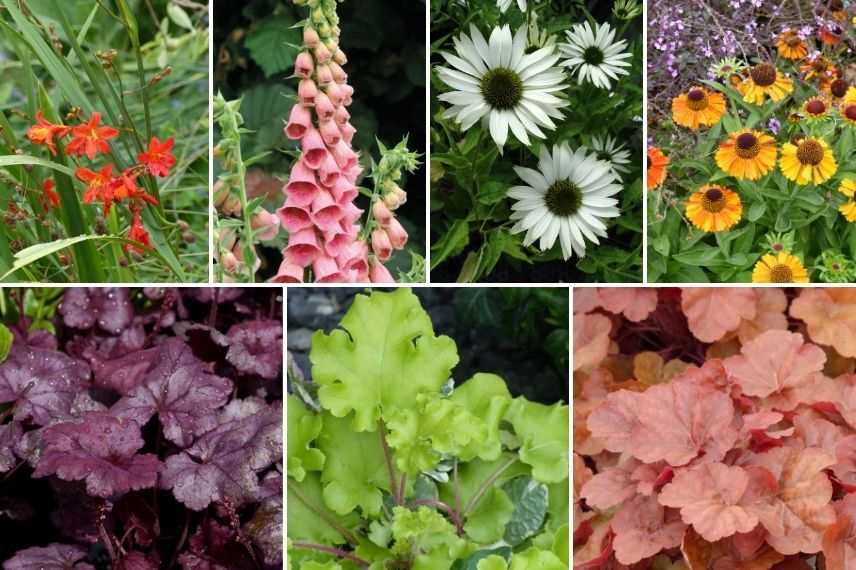
Crocosmia ‘Carmin Brillant’, Digitalis ‘Summer King’ (copyright Thompson & Morgan), Echinacea ‘Virgin’, Helenium ‘Short’n’Sassy’, Heuchera ‘Plum Royale’, ‘Lime Marmalade’ and ‘Timeless Orange’
Read also
Foxgloves: sowing, planting and careIn a romantic garden
Foxgloves are excellent companions for roses, with which they create opulent and romantic scenes. Opt for light shades (for example, Digitalis purpurea ‘Suttons Apricot’). You can plant them alongside Hydrangeas, English roses by David Austin such as ‘Mary Rose’ or ‘Strawberry Hill’, or even alongside white hollyhocks like the variety ‘Chater’s Double Icicle’. Add Delphiniums, Ornamental Alliums (such as Allium ‘Gladiator’), Irises, Astrantias, and Columbines. Complement the arrangement with a few grasses with light tufts, such as Amethyst Fescue or Common Cotton Grass with fluffy inflorescences.
Discover our plants for a romantic garden.
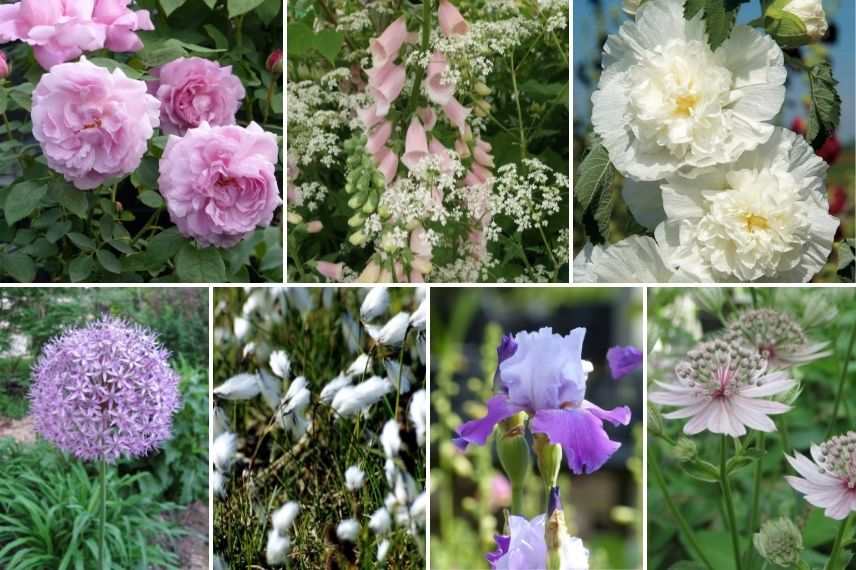
Rosa David Austin ‘Mary Rose’, Digitalis ‘Sutton Apricot’ (photo Lionel Boban), Alcea ‘Rosea Chater’s Double Icicle’, Allium gladiator (photo beautifulcataya), Eriophorum angustifolium (photo Wikipedia), Iris germanica ‘Carl and Sissy’ and Astrantia major ‘Rosea’
In a white monochrome garden
Digitalis come in a variety of shades, both vibrant and soft, allowing for contrasting displays. However, it is also possible to opt for a monochrome white theme. In partial shade with cool soil, you can create an elegant scene by combining bushes and perennials. In the background, Hydrangeas accompany the Snowball Viburnum. Then, a white Digitalis (Digitalis purpurea ‘Alba’, ‘Snow Thimble’ or Digitalis laevigata ‘Alba’) pairs beautifully with airy perennials that lighten the display: for example, Astilbe with feathery inflorescences or perennial fennel (Foeniculum vulgare). Incorporate spherical inflorescences that highlight the upright stems of the Digitalis, such as Echinops or ornamental garlic. At the front, place perennials with decorative foliage, such as variegated Hostas or Brunneras. The Brunnera macrophylla ‘Mr Morse’ produces silvery foliage and tiny white flowers. Creeping plants add a beautiful and vibrant finish to the border, such as white Aubrietas or delta Pinks (for example, Dianthus deltoides ‘Albiflorus’).
You will find everything you need to create a white garden in our advice sheet.
You can find our plants for white garden inspiration on our website.

Dianthus deltoides ‘Albiflorus’, Digitalis purpurea ‘Snow Thimble’, Hydrangea macrophylla ‘Wedding Gown’, Brunnera macrophylla ‘Mr Morse’ and Hosta “Queen Josephine”
In a large pot
To decorate your terrace or balcony, the less imposing varieties of Foxglove are well-suited for cultivation in large pots. For example, the ‘Goldcrest’ hybrid, which is modest in size, reaches a height of 50 cm and a width of 30 cm. The Digiplexis ‘Illumination Raspberry’, ‘Illumination Flame’, and ‘Berry Canary’, a cross between Digitalis and Isoplexis, are also perfect in pots, grown as annual plants, as they are not very hardy. Their flowers are even more vibrant than those of Digitalis. For planting, choose a deep and wide container (at least 40 cm deep). Plant your Foxgloves solitarily in a rich, light, and well-draining substrate, then place the pots in partial shade or in the sun if you are in a cooler region. They look wonderful in a trough or a large zinc basin, in a scene of flowering pots: Hostas, Fuchsias, Heucheras, Campanulas, and Dianthus. Accompany them with potted grasses, such as Carex or Pennisetum villosum with feathery plumes, as well as a climbing Clematis in a pot in the background.

Digitalis ‘Goldcrest’ (photo Guido), Fuchsia ‘Walz Jubelteen’, Campanula portenschlagiana, and Carex ‘Evercream’
In a dry garden
In general, Digitalis prefer soils that remain cool in summer, but some adapt well to dry conditions. For example, Digitalis parviflora and Digitalis obscura tolerate dry soil in summer. In a dry, wild-looking garden, plant them alongside grasses, such as Stipa arundinacea, as well as warm-coloured Achilleas. Santolina and Jerusalem Sage blend in well. Finally, Lavender, Nepeta, ‘Mainacht’ Sage, and ‘Big Blue’ Eryngium add a touch of blue.
All our plants for Dry Garden in our section.
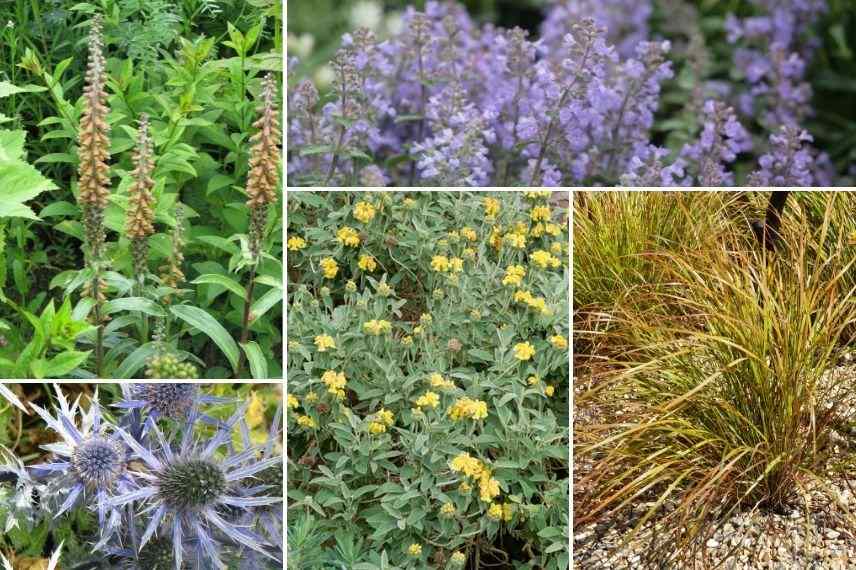
Digitalis parviflora (photo peganum), Nepeta faassenii ‘Purrsian Blue’, Eryngium zabelii ‘Big Blue’, Phlomis fruticosa (copyright Horticolor Lyon) and Stipa arundinacea
[en_bouquet]
The vertical spikes of Foxglove make stunning bouquets that last a long time in a vase. Create a pink colour scheme by mixing several varieties: Camelot Rose Foxglove, Digitalis mertonensis, and Digitalis ‘Glory of Roundway’. Alternatively, create a warm-toned bouquet with Goldcrest Foxglove, Digitalis lutea, and Digitalis purpurea ‘Alba’. Add a few fern leaves to evoke the undergrowth. In a rustic spirit, they can be mixed with Lupins, Roses, flowers of Chervil, Hardy Geraniums, Brunneras, and Heucherellas. As Foxglove is toxic, be sure to wash your hands thoroughly after handling it and keep your floral arrangement out of reach of children.
Find all our tips for Creating a garden of cut flowers to make your own bouquets
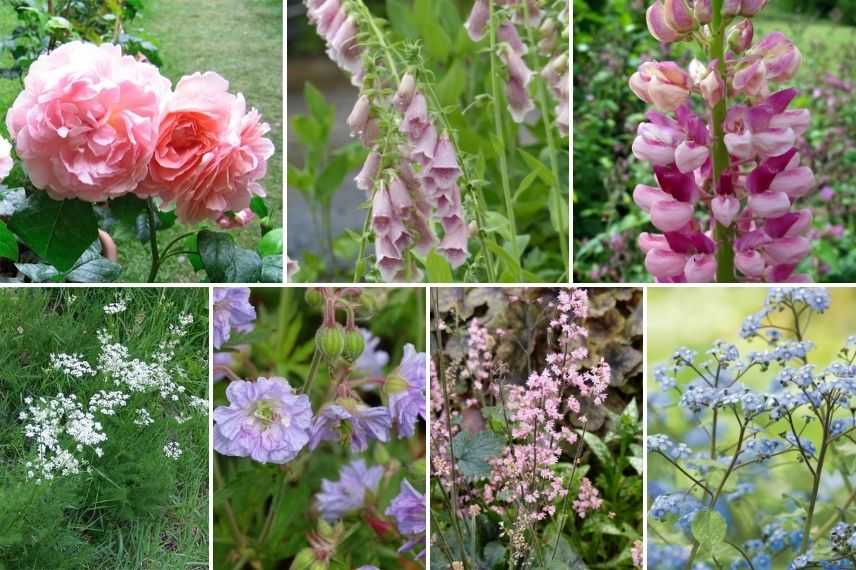
Rosa David Austin ‘Strawberry Hill’, Digitalis mertonensis, Lupinus polyphyllus, Meum athamanticum, Geranium pratense ‘Cloud Nine’, Heucherella ‘Pink Revolution’, and Brunnera macrophylla
- Subscribe!
- Contents
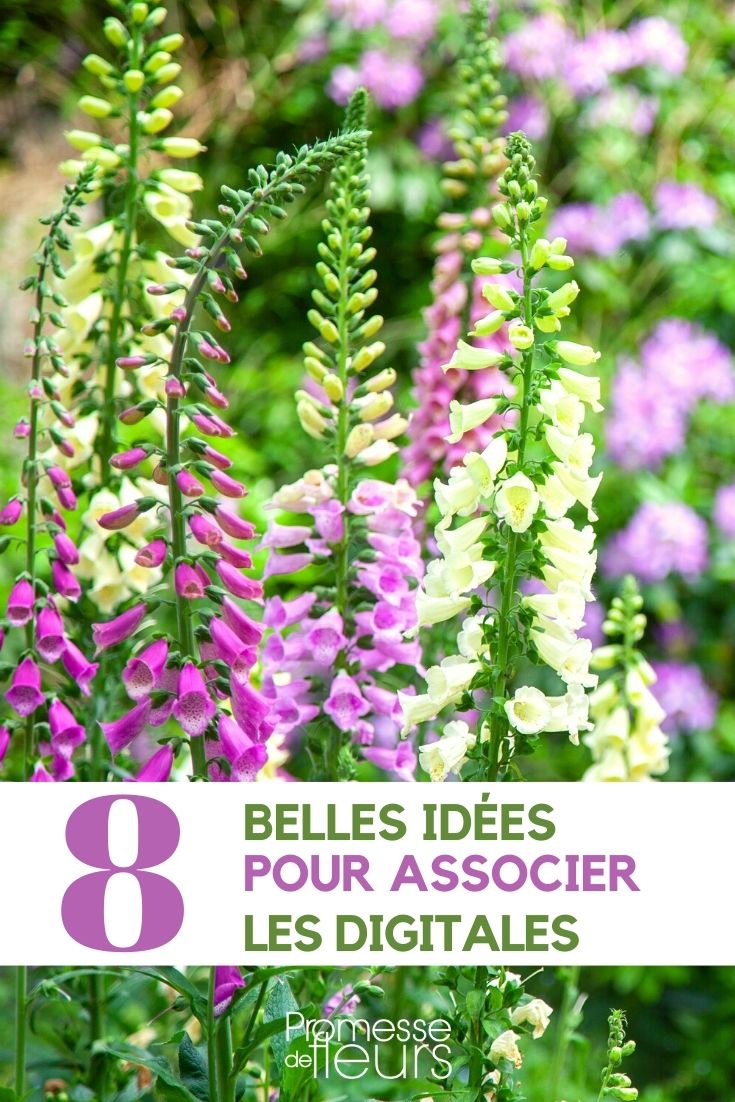































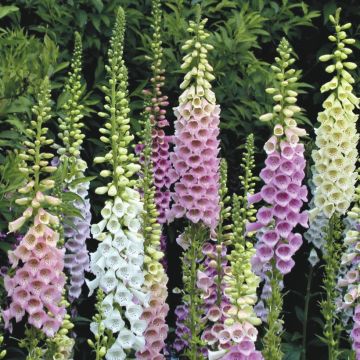




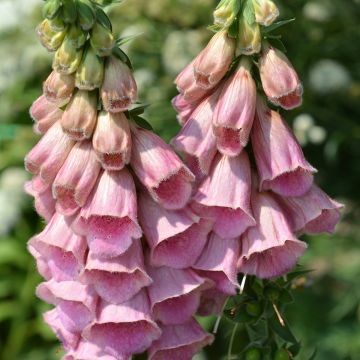

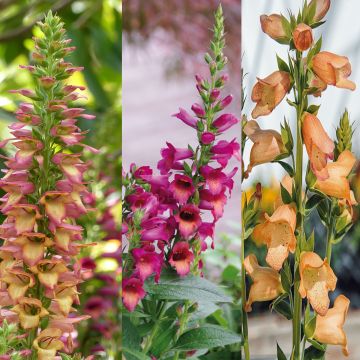


Comments